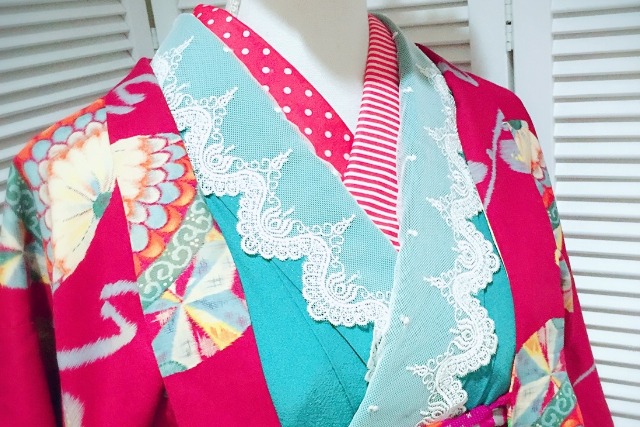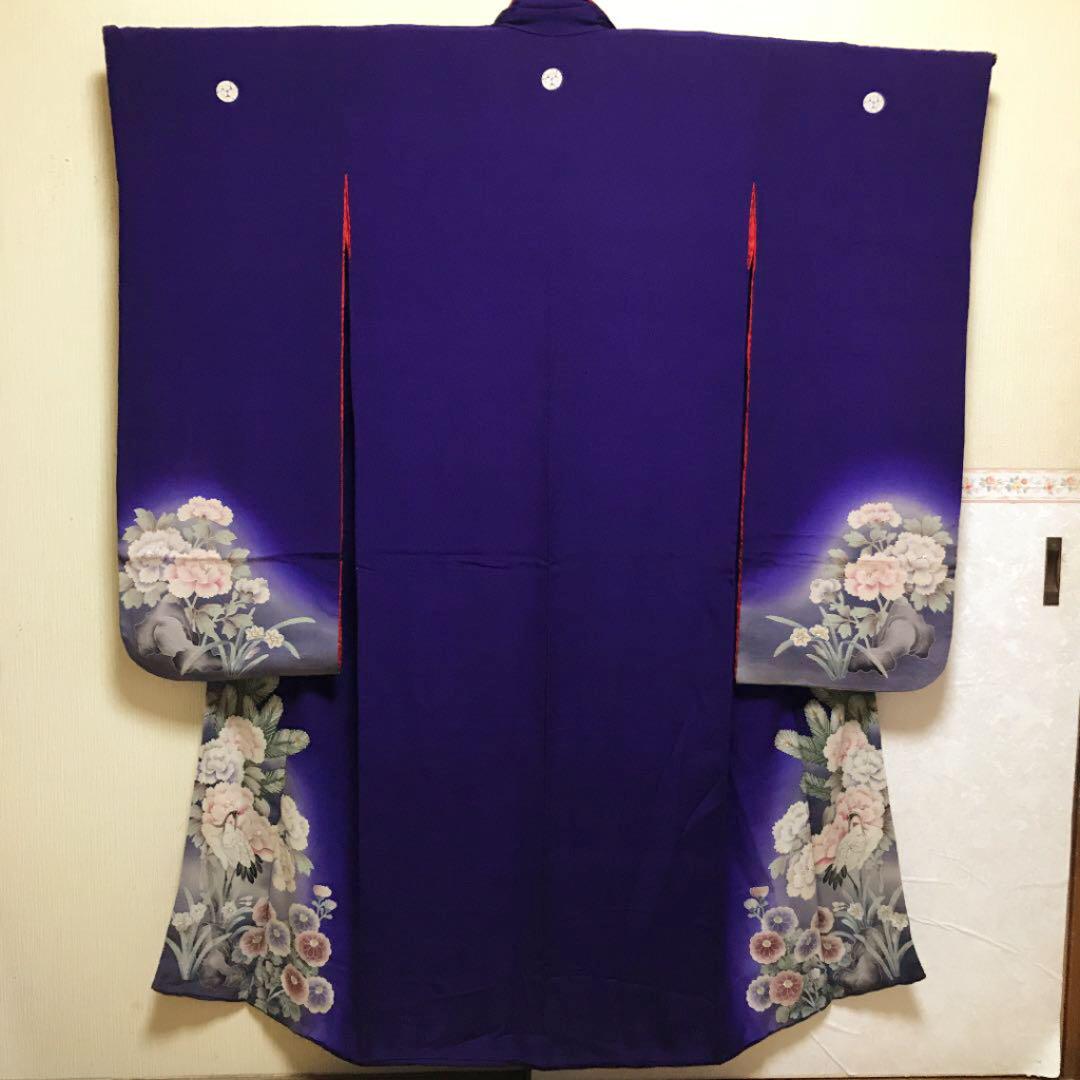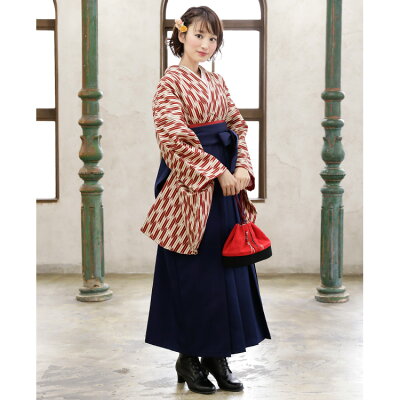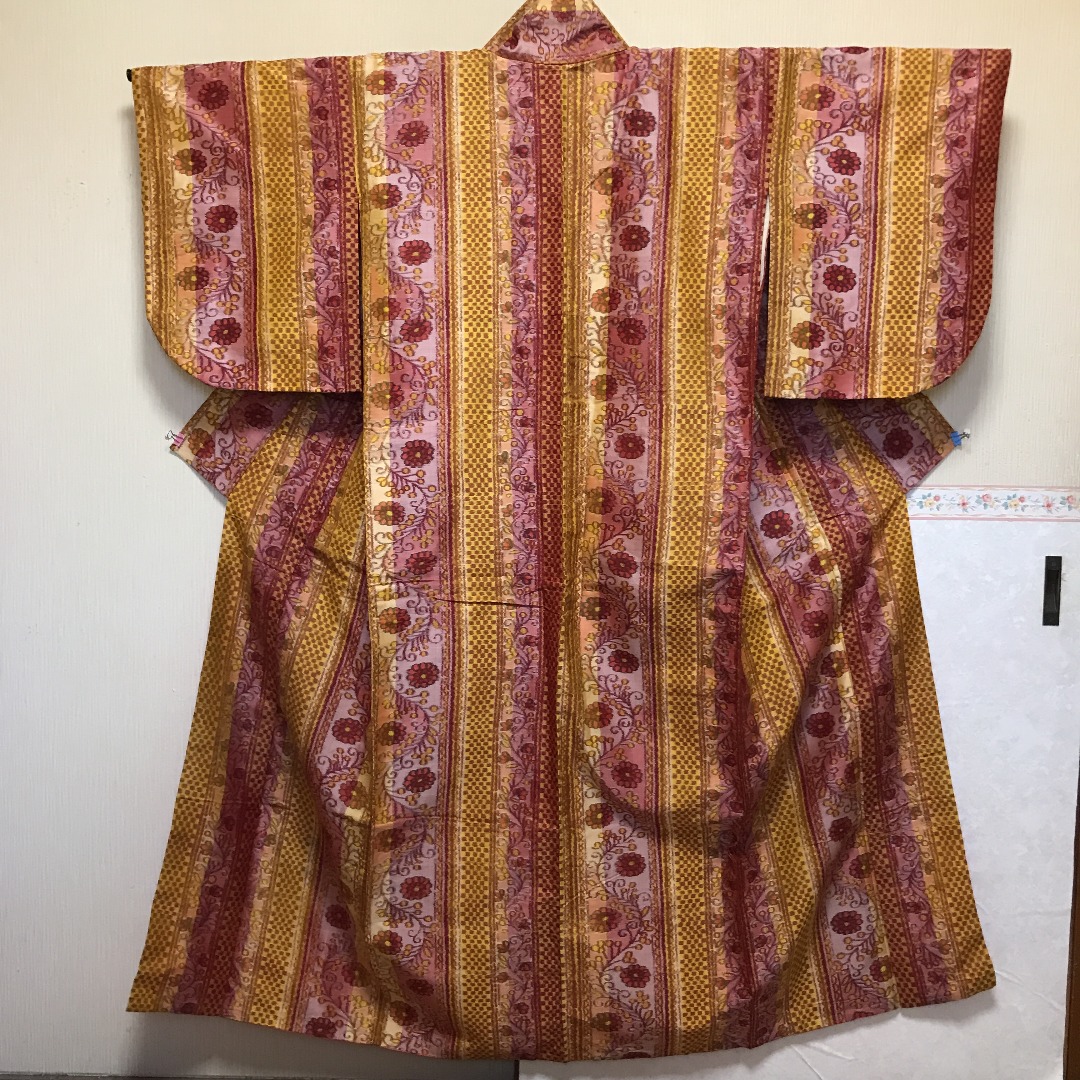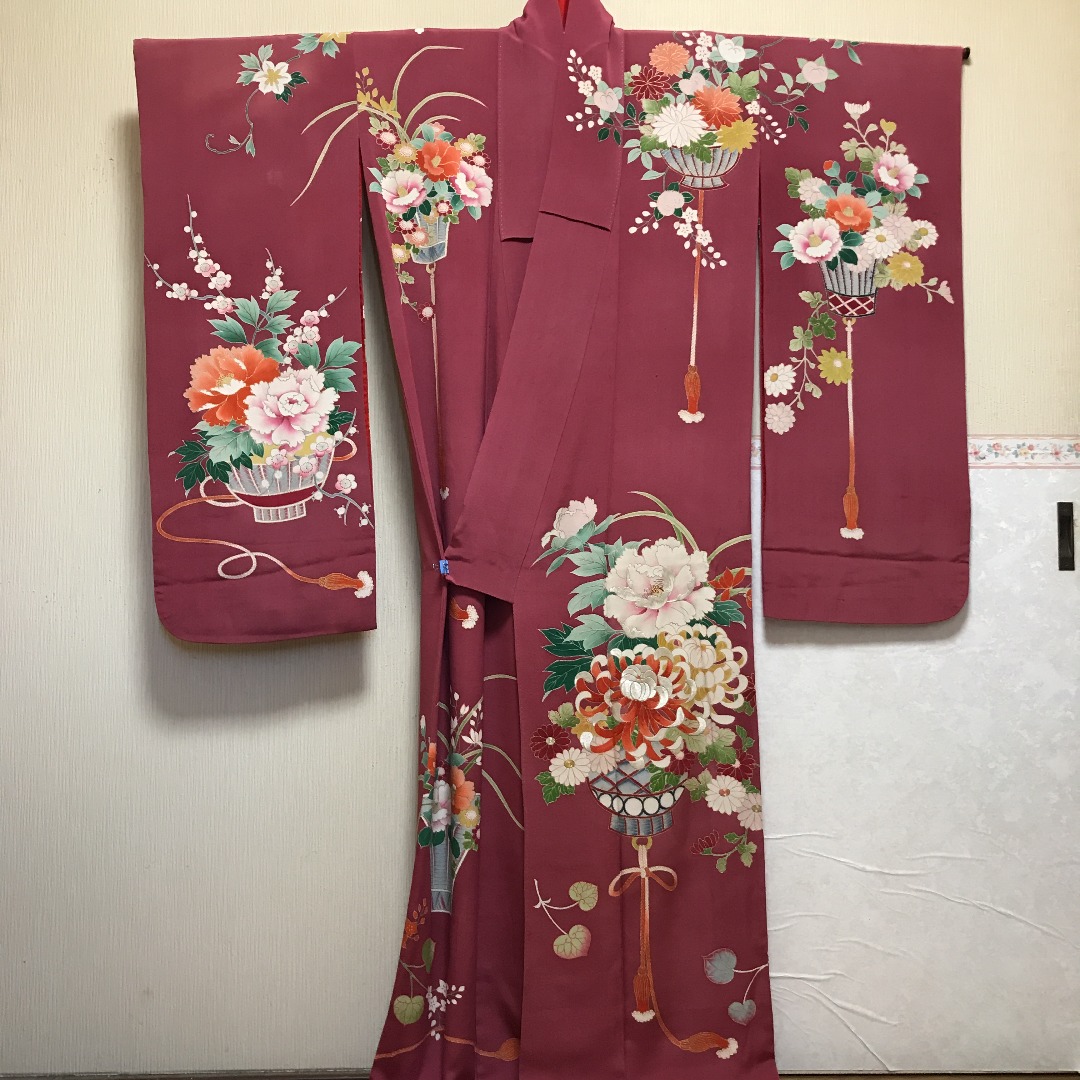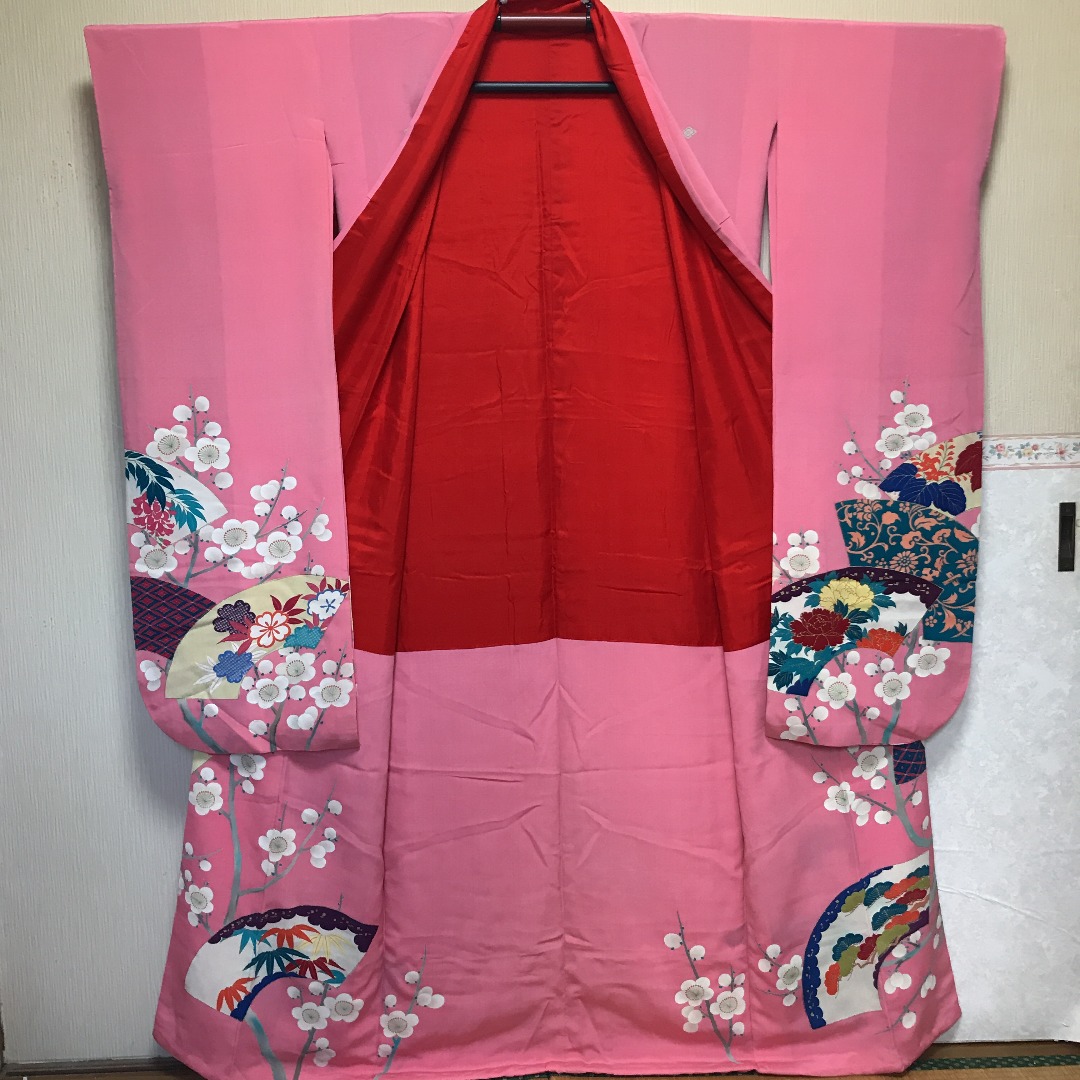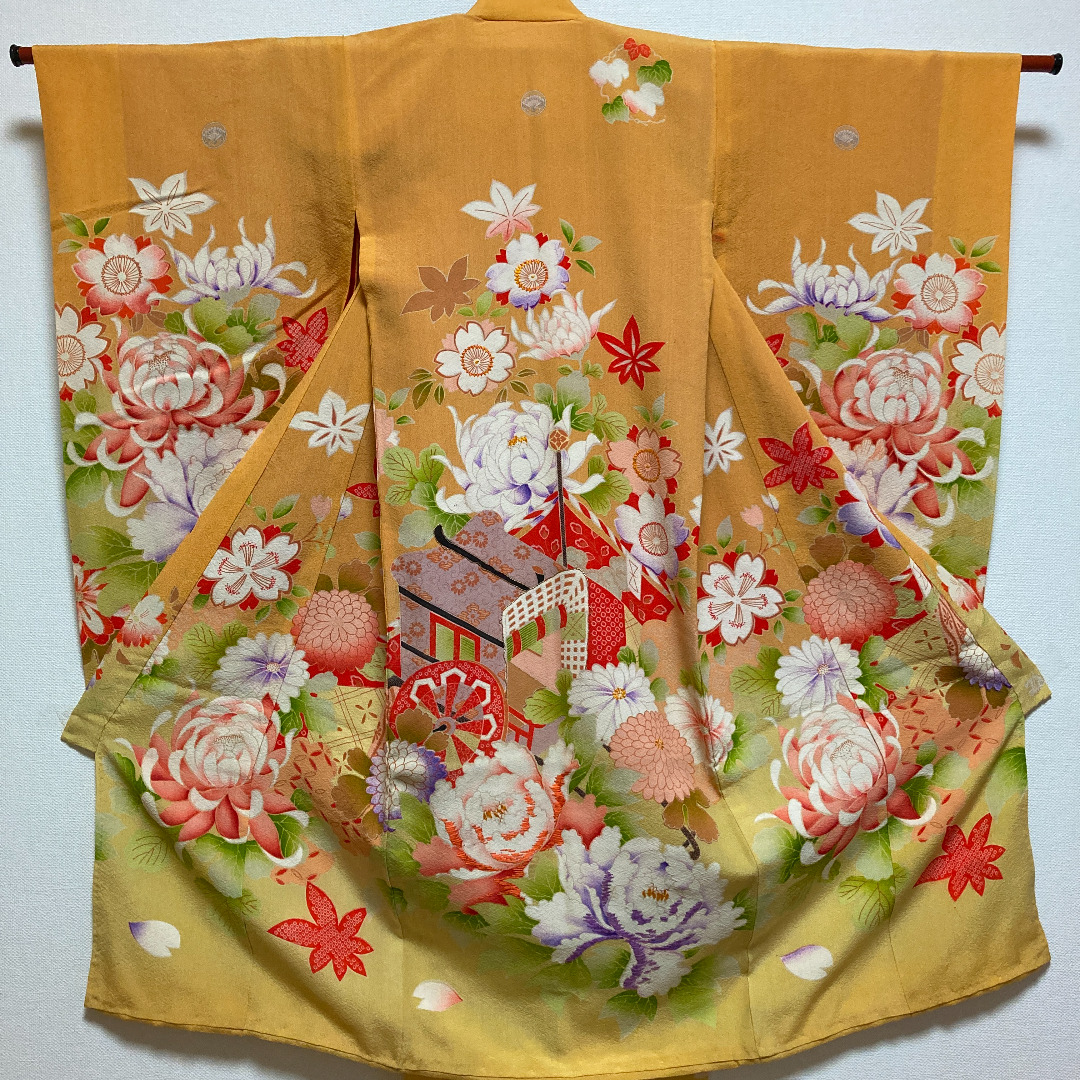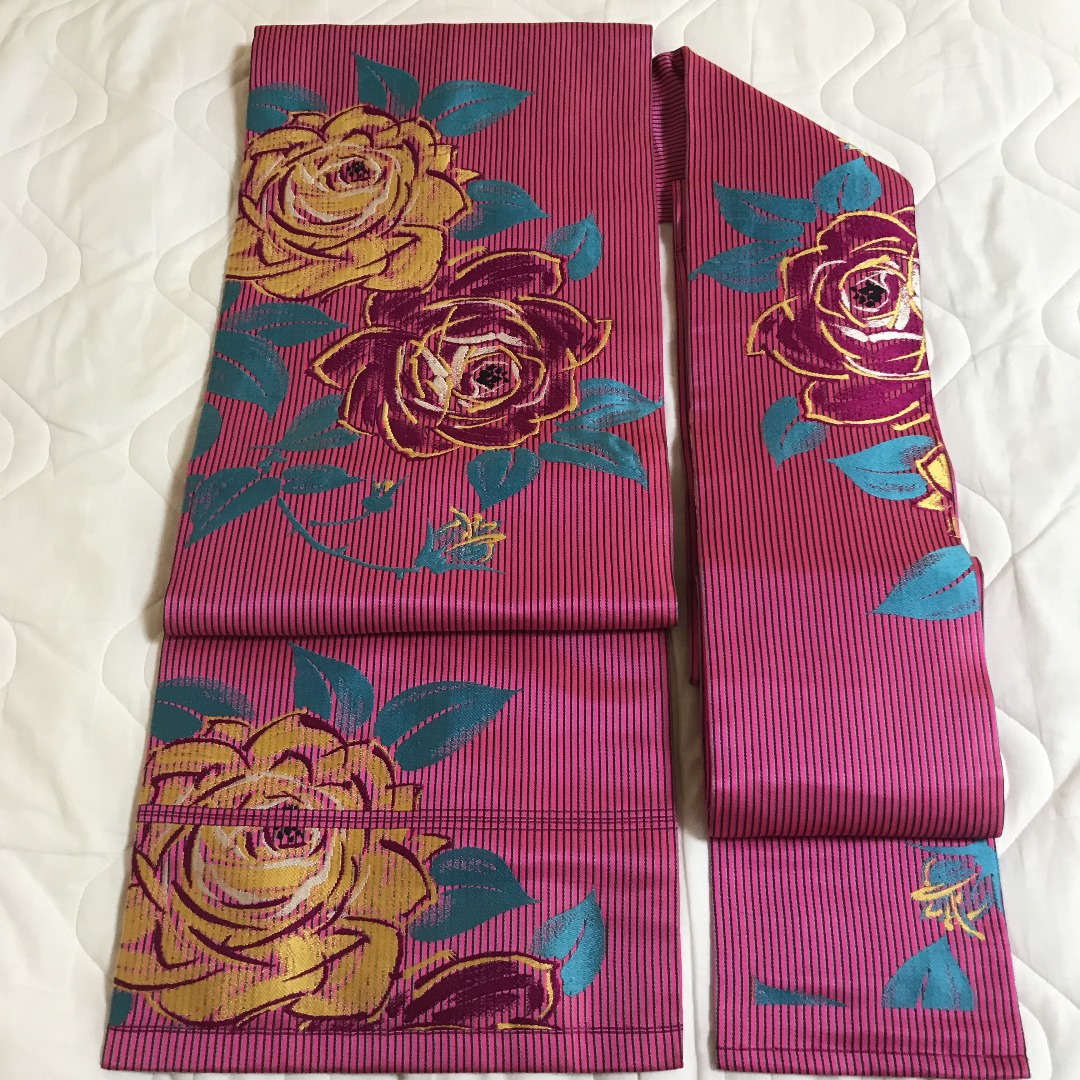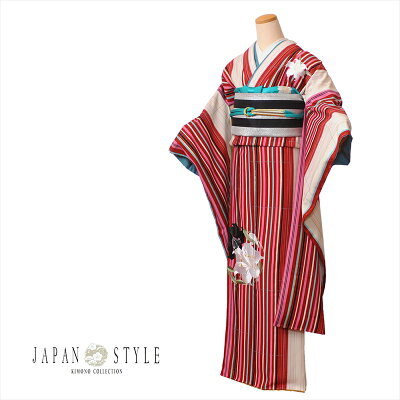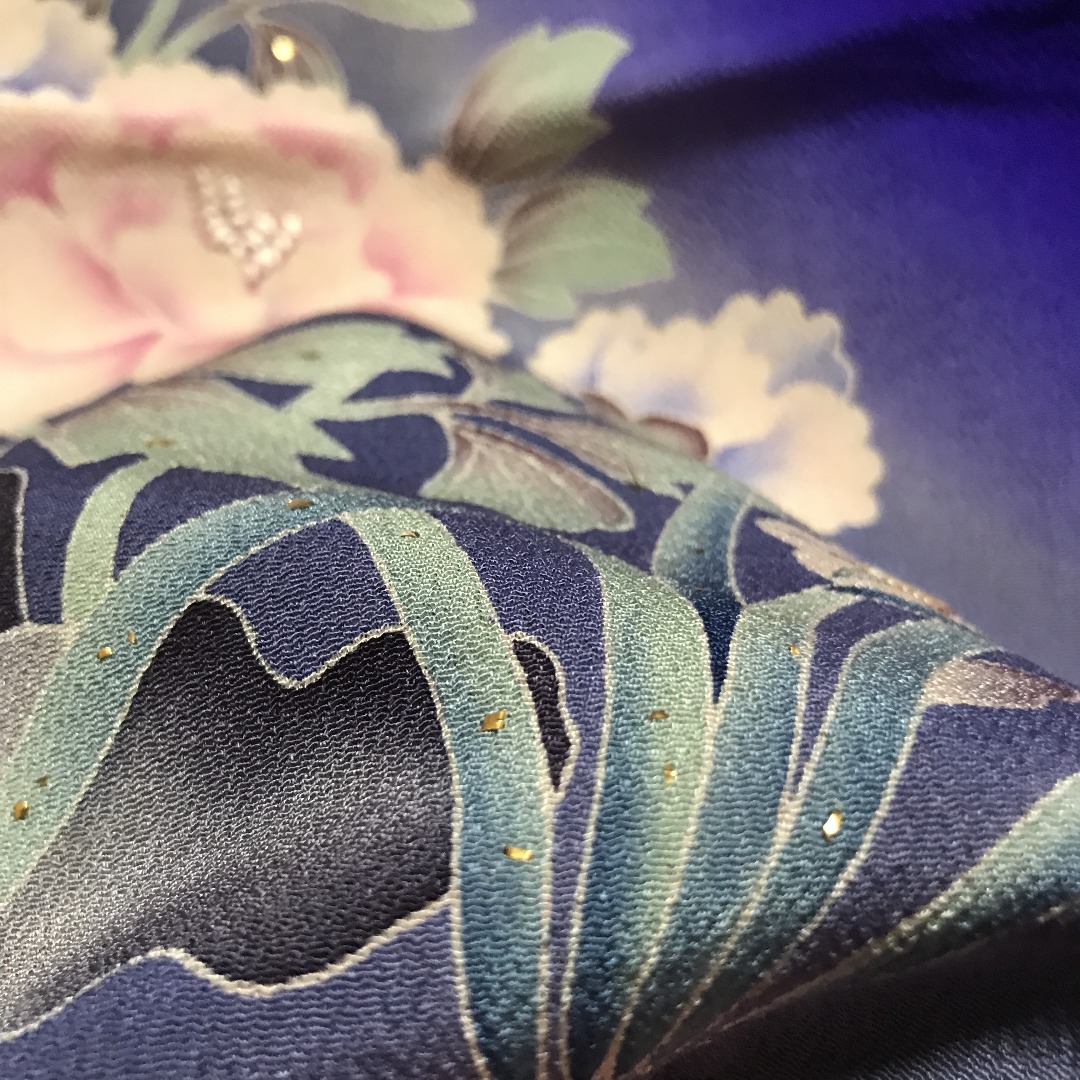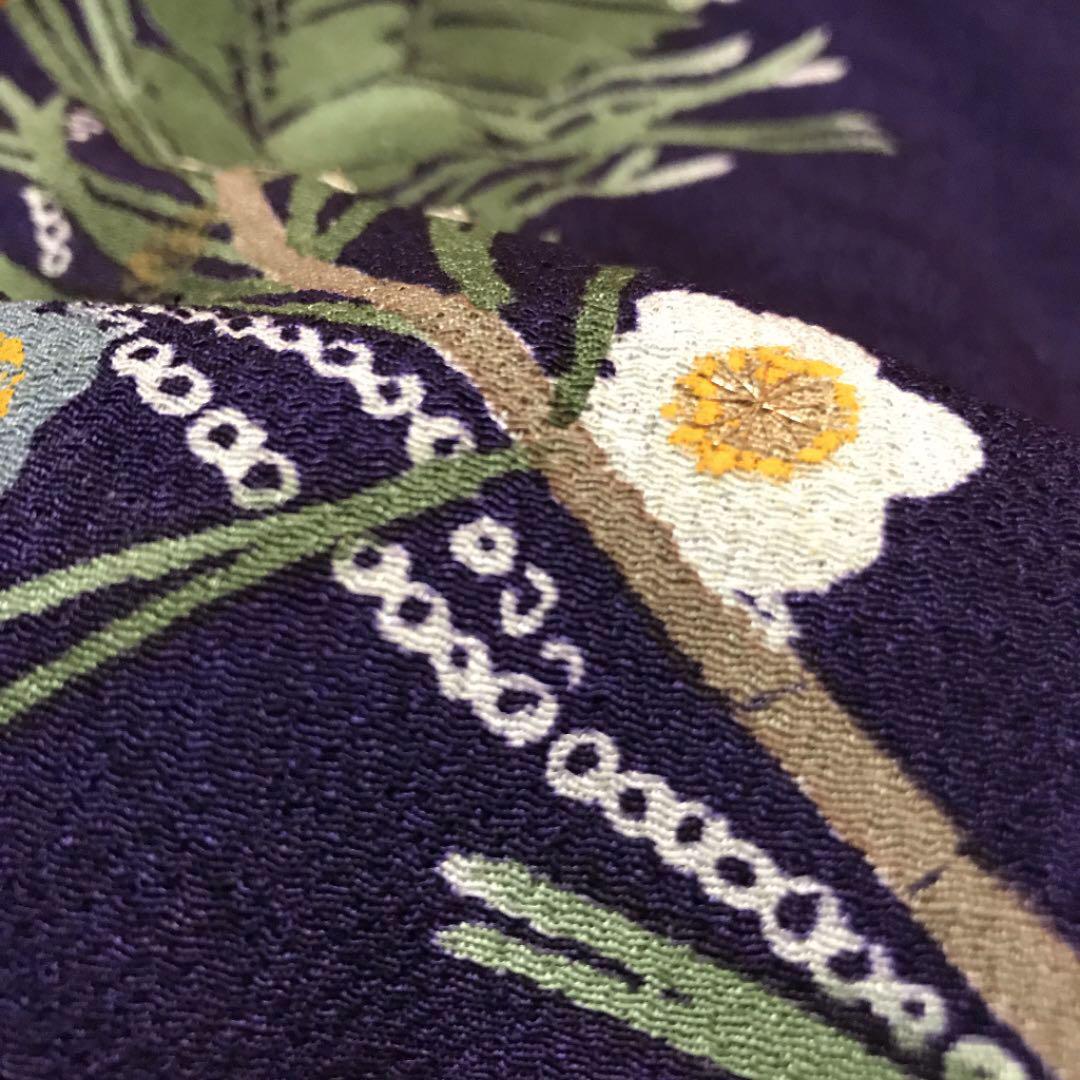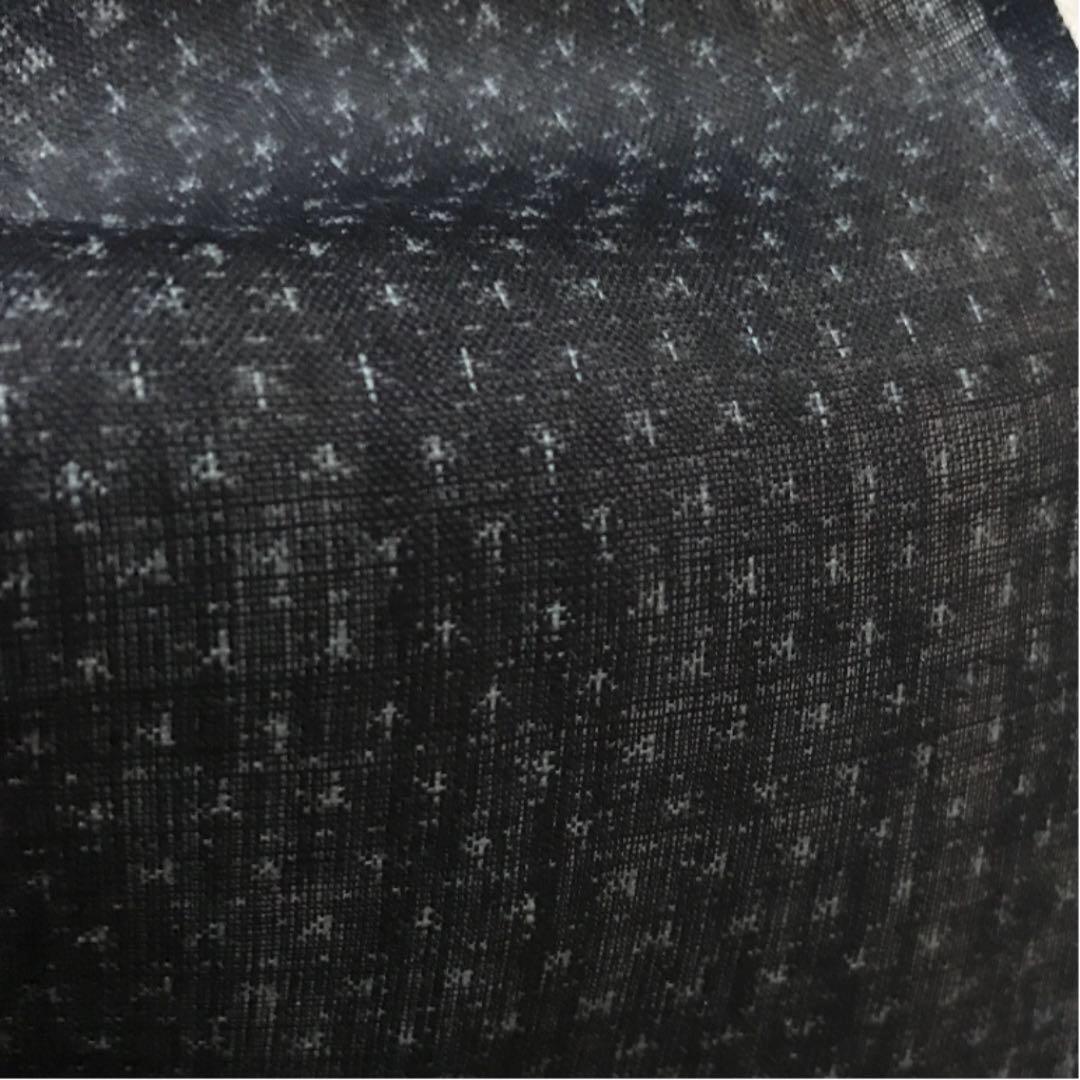Kimono has a long history,especially antique kimono means that they are made from Edo period to Taisyo and Showa period.
“Taisho roman” kimono is very popular and we can see at online shop, rental store and small stores.
Its particular patterns are retro-modern style.
This time I’ll show you more about antique kimono.
Antique kimono of each era
Popular era is from late of Taisho period to early Showa period.
Let’s see what has changed during those period.
Meiji period
On the whole, antique kimono is colorful and splendid but from early to middle Meiji period, sumptuary regulation was still remained.
Even silk furisode was dyed sober colors. Only sleeves and hemline part had a few quiet patterns.
Also maru obi was made black and brown yarns.
Compare to now, the size of family crests was much bigger.
After the Meiji Restoration, adoption of western clothes has started and kimono became more brightly-colored and gorgeous patterns.
Cloth is used soft tirimen.
At those time, girl’s high schools constructed so schoolgirls are increased.
Then schoolgirls started to wear hakama(skirt for formal wear) . This style is called “Ebitya-shikibu”.
Taisho period
At the Taisho period, european flowers like rose and tulip is drawn.
Schoolgirls started to wear Japan and western culture mixed style. Yagasuri patterns which means resembling that of arrow feathers kimono, Andon-bakama and leather boots.
This style became mainstream.
Due to the art nouveau effect and spread of chemically synthetic dye technique, vivid and curve patterns kimono became more popular.
At the late of Taisho period, art deco style became popular and Meisen pattern(abstract pattern) was born.
Blending of Japanese and western styles are called “Taisho roman” and it last until the early of Showa period.
Besides this style, decorative han-eri and Naga-baori(long height haori) became more popular.
Showa period
Early of Showa period, schoolgirls uniform has changed to a middy blouse and skirt.
Women who try to wear european clothes are called “Moga(for short modern girl)”.
Art deco style also effected to the whole town.
Meisen silk clothes patterns are straight or carving line, european motifs car, flowers, trump and polka-dots.
Other popular thing were bead’s bag, parasol and race items.
However, during the Showa period, gorgeous fashion has regulated and people’s clothes became cotton kimono and work pants.
Plus sleeves was shortened and it was called “tutu-sode”.
Postwar days, dressmaking and sewing machine became very popular and people started to wear european clothes instead of kimono.
Features of antique kimono
Kimono which made in the prewar time are called antique and kimono which is made postwar time is called retro or recycled kimono.
In general terms, there are two kinds of patterns which are Taisyo-roman and vivid colored traditional patterns.
About kimono
Features of antique uchikake, furisode, irotomesode and komon are smaller than today.
At that time, people were physically small, so it’s not easy for people of modern to wear.
It’s difficult to find right nagajuban which fits to kimono well.
Lining of kimono uses cotton, muslin and wool cloth.
Sometimes muslin might have plough groove, so we need to take care of.
Hitoe kimono which has no lining is recommended. So we don’t need to repaper lining.
Antique nagajuban was used red silk which is called “momi”.
Sometimes red color shifts to doura part.
Meisen kimono and vivid colored kimono’s wear age is 10s to 30s.
Also there are child’s antique kimono and has pretty patterns, so it’s popular for remake materials.
Features of obi
Antique kimono fits perfect to antique obi.
Those obi is short and cloth is weak.
Rayon obi gets heavy.
Let’s enjoy fabulous coordinate with antique obi.
About purchase
Important thing to buy antique is that we need to confirm strength of cloth and stains.
If you interested in antique furisode, kimono and hakama,it’s better to find a kimono rental shop.
The cloth of antique
During the middle of Meiji period, vivid dyed tirimen was popular.
Especially, silk crepe with thin yarns which is called “kinsya-tirimen” and it has gloss and soft.
Thick twist yarns made “kodai-tirimen” and “edo-tirimen” which is thin and mat cloth are very popular.
Other antique cloth are mon-rinzu, kasuri and plain weave.
Majolica omeshi is a unique kimono which weaved by gold and silver yarns and it make cloth thick.
It has very shiny and exotic patterns and made only 4 years in toka town from Niigata prefecture.
We can see silk and rayon materials.
Difference is that rayon has starchy touch and weight. Rayon has cool touch.
Other antique materials are cotton and hemp.
Especially, indigo dyed cloth is expensive.
It’s unfit to wear, so it can be used for remake other things.
Summary
Now, values of antique kimono changes largely.
We can see unique and mixed style with european clothes.
Let’s enjoy new coordinate in your way!!

